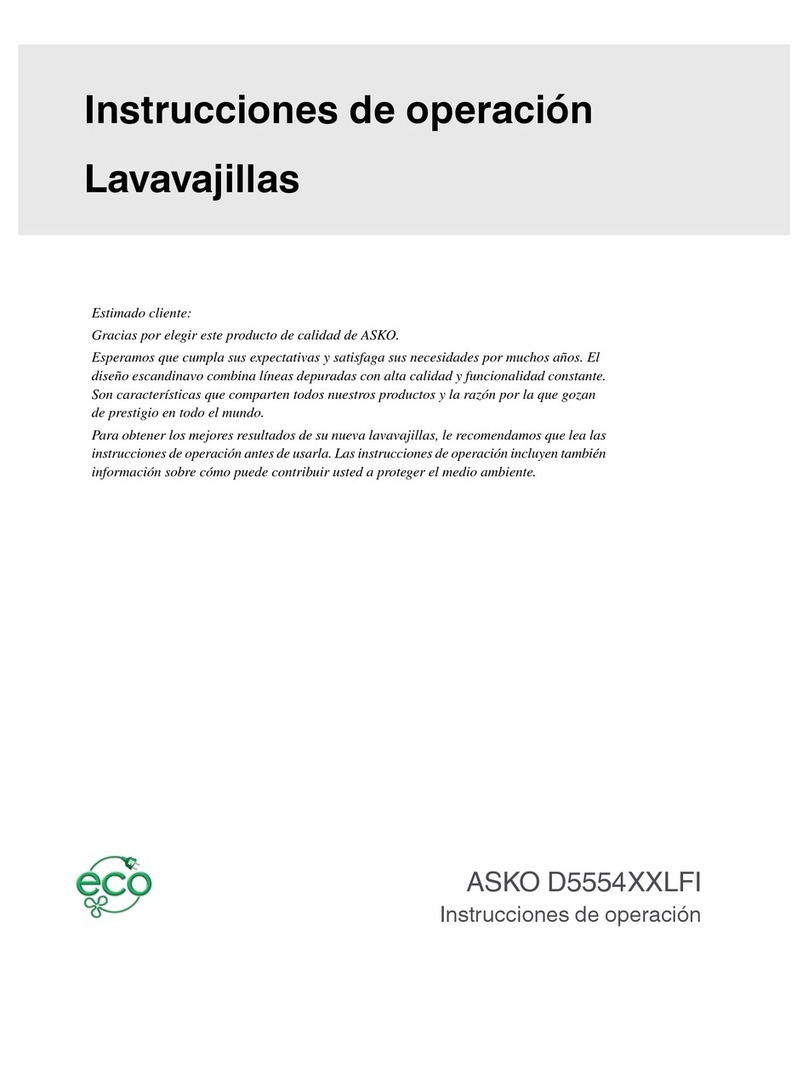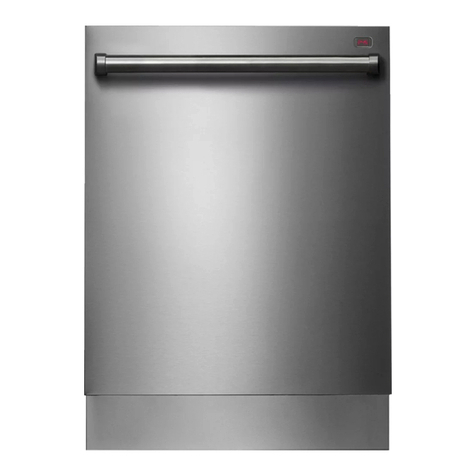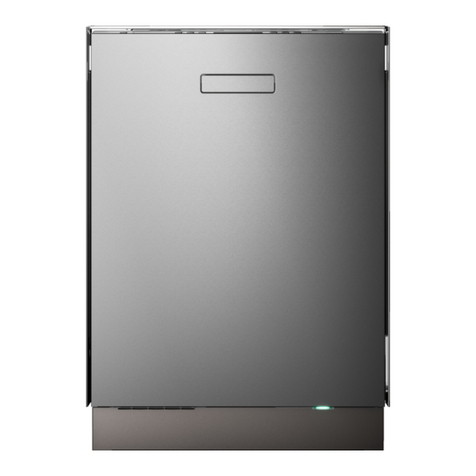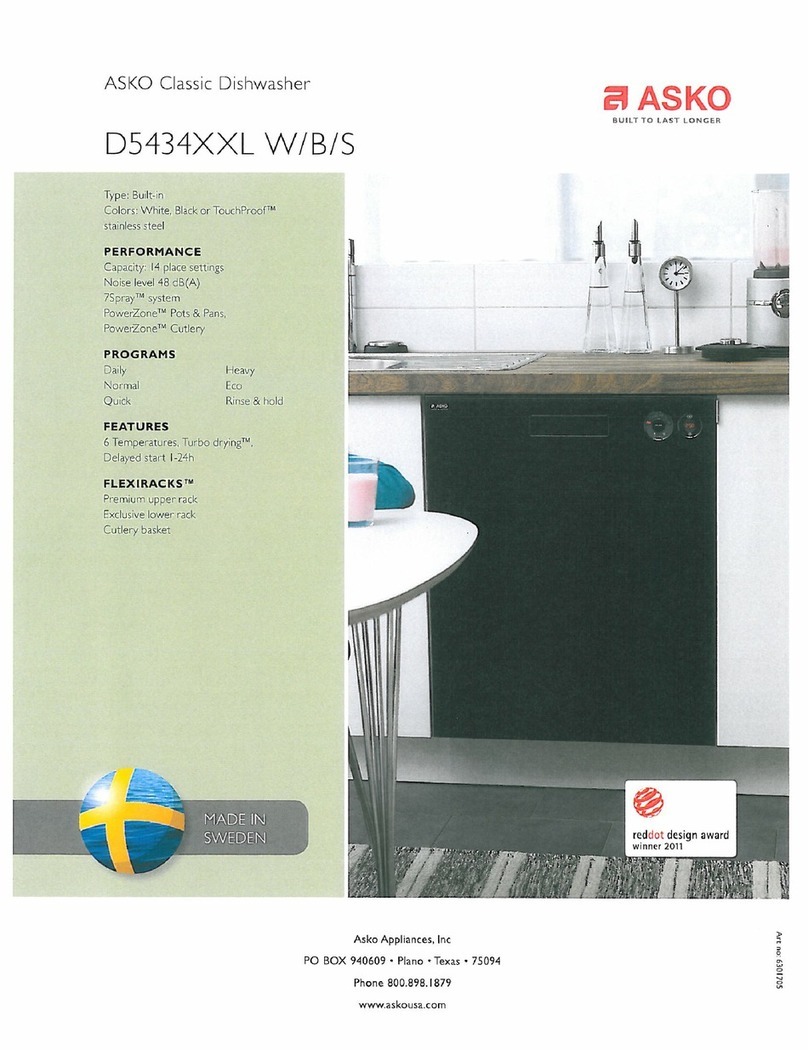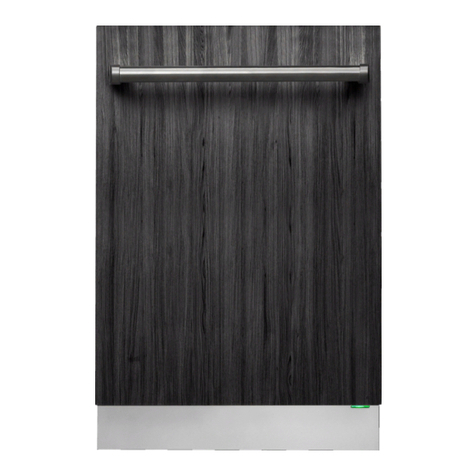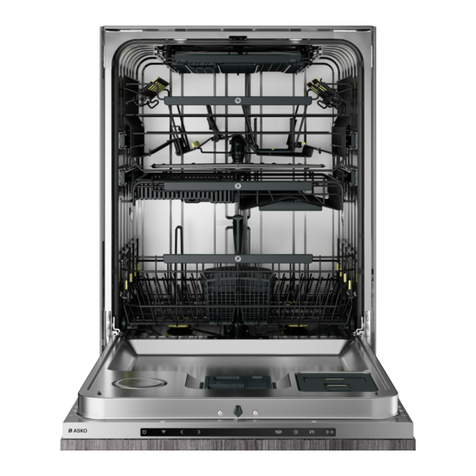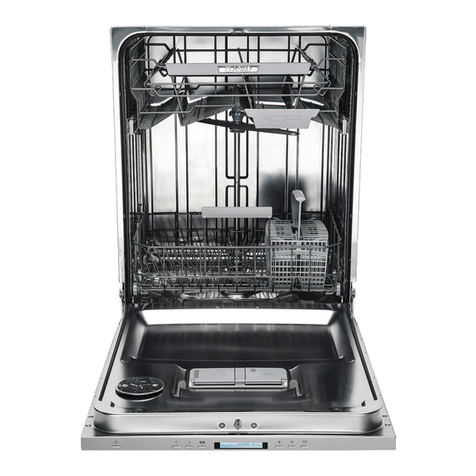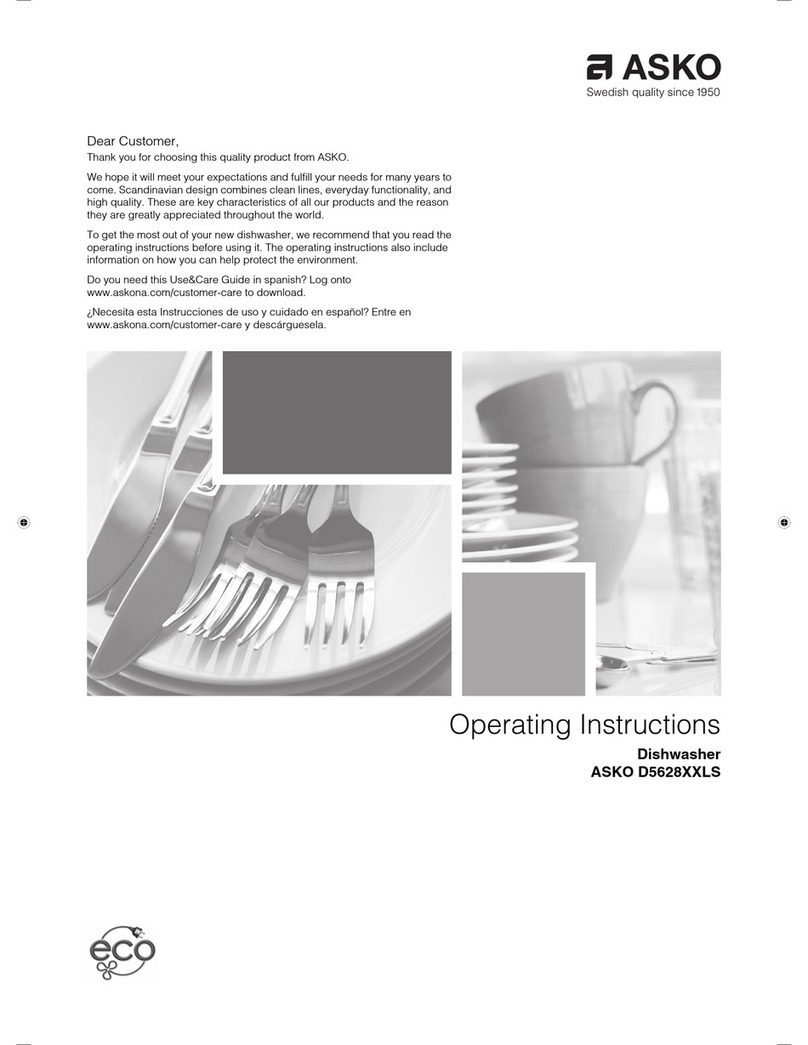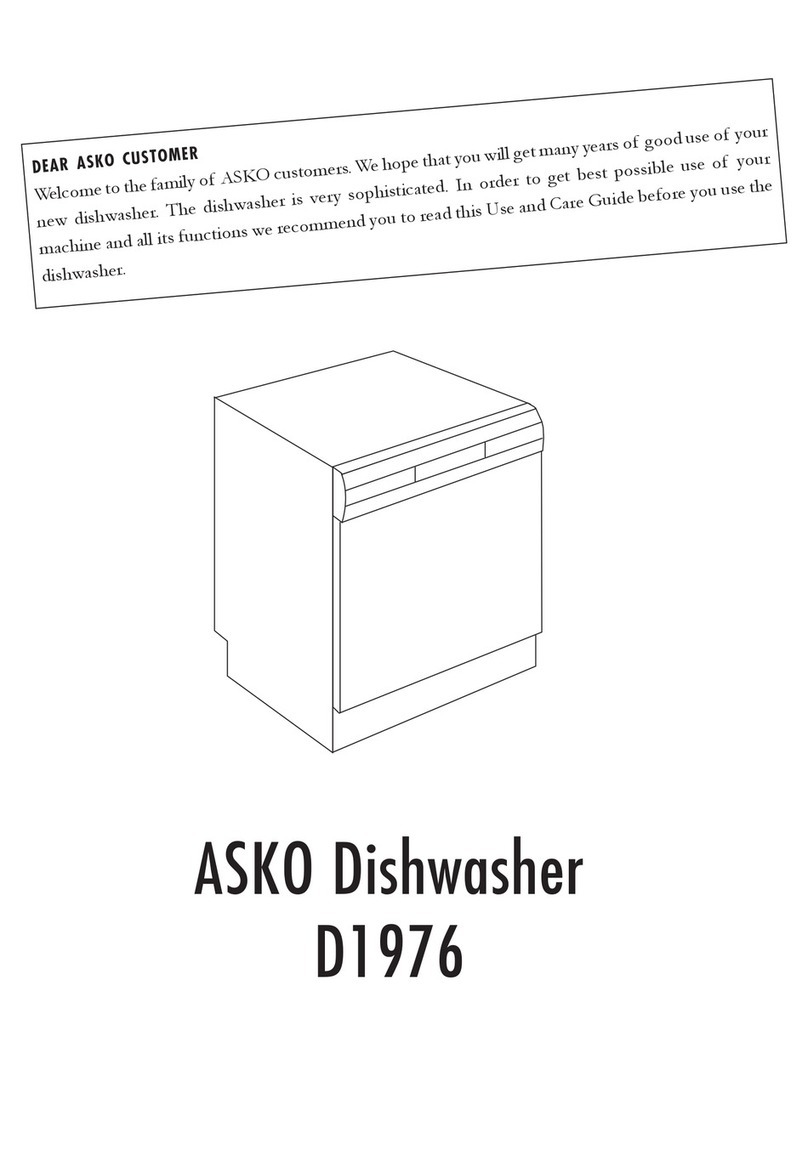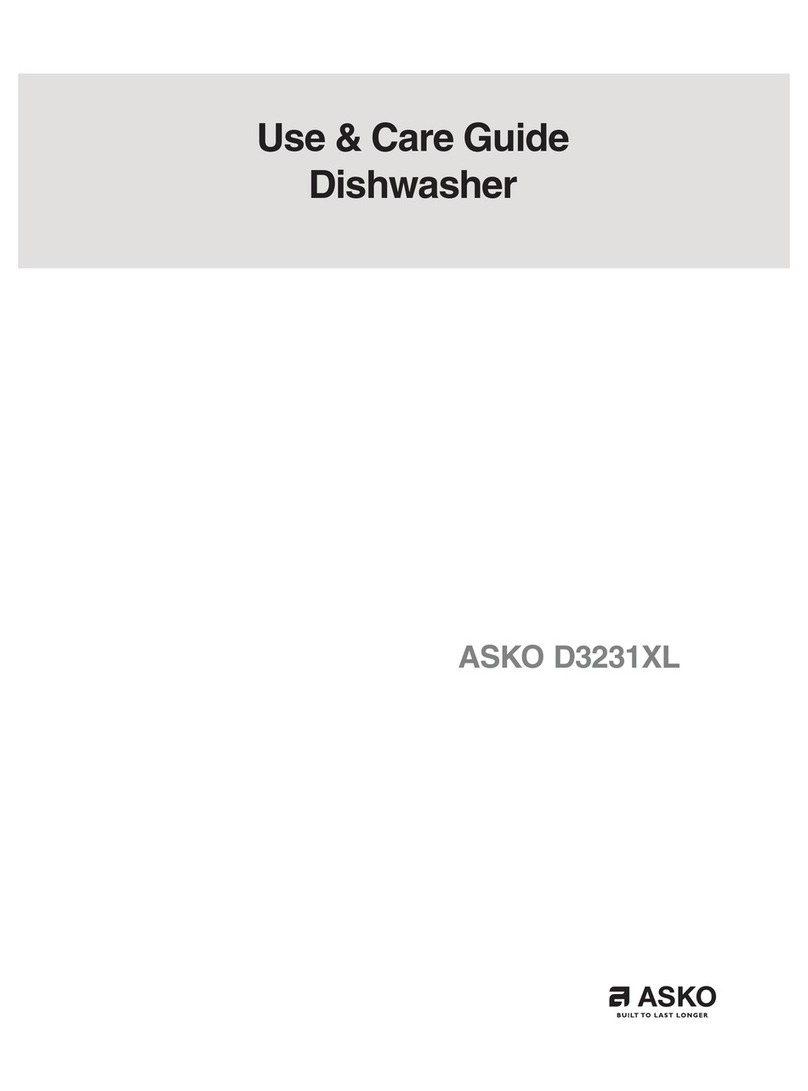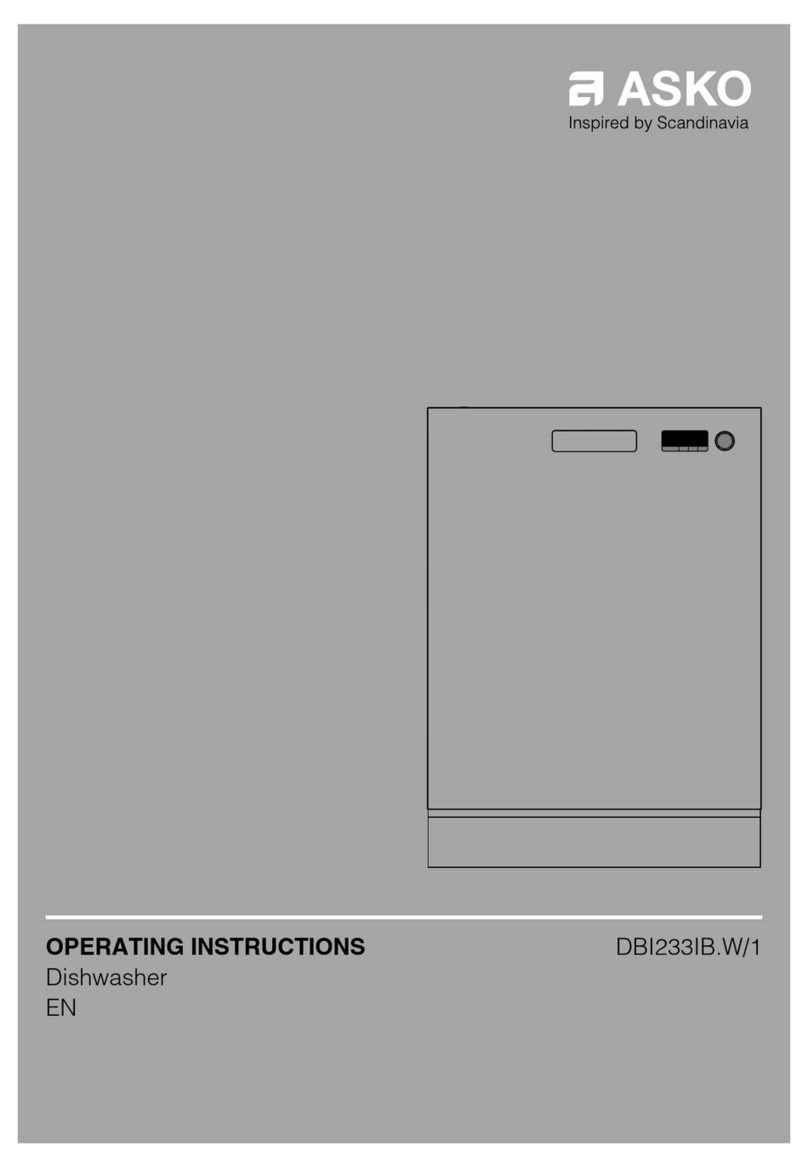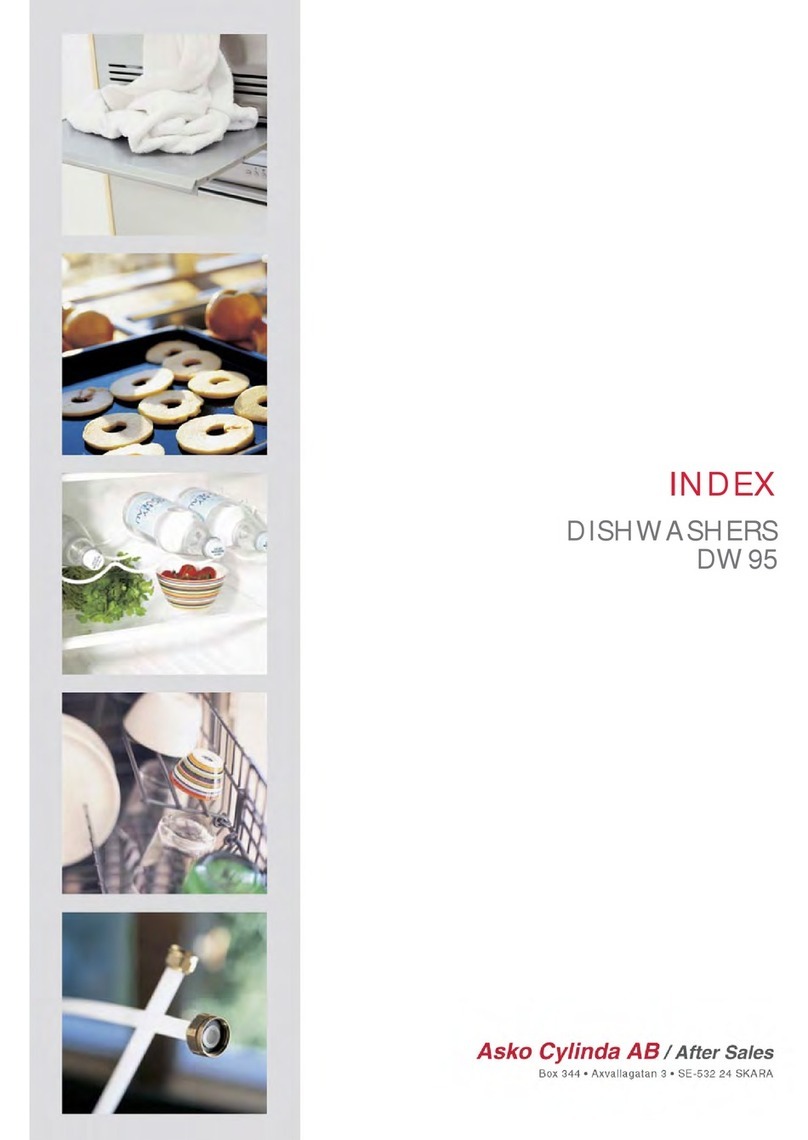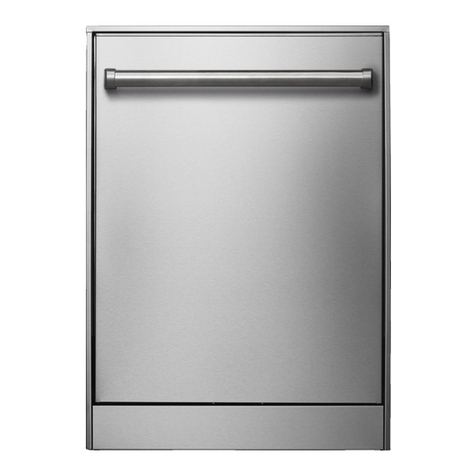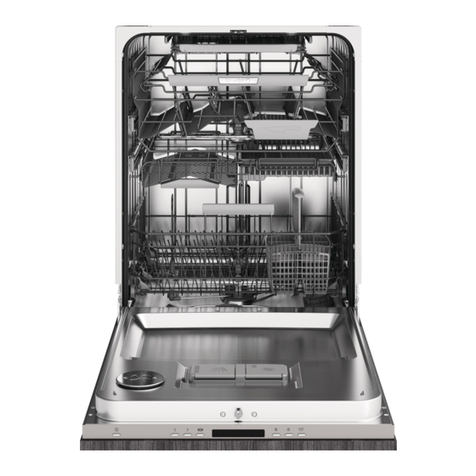10
If the water in your area is very hard, it may be necessary to alter the
amount of salt required.
1. Press the five times within 15 seconds to get into the salt
adjusting programme. Then the lamps show the last programmed
adjusting level.
2. Press for a water hardness of 0–14 °dH
" " " 15–19 "
" " " 20–24 "
" " " 25–34 "
" " " 35–49 "
The change will remain till a new change is made.
If no change is made within 2 seconds, the machine will revert to the
main programme.
*NOTE: After refilling, it may take
some time before the indicating
lamp goes out.
Level indicator
Topping up with rinse aid
Drying will be faster if you use a rinse aid.
The rinse aid indicating lamp on the panel
flashes if the machine is out of rinse aid.*
An indicator in the cap of the rinse aid
container shows whether it is empty. If the
indicator appears completely black, there is
sufficient rinse aid. If the size of the black
spot is reduced, the container requires
filling.
The first filling of rinse aid (Finish) is
included in the machine when it is delivered
from the factory.
Adjusting rinse aid metering
Rinse aid is metered automatically: the setting is adjusted before
the machine leaves the factory.
It may be necessary to alter the setting, to adjust the amount of
rinse aid metered, depending on the hardness of the water supply.
This can be done by opening the lid. Then you can see the
setting. This is normally set at 1. If the water in your area contains
lime (over 10–12 °dH), an acid rinse aid (containing citric acid)
should be used if the machine is not fitted with its own water
softener. The metering setting should be adjusted to 1–6,
depending on the hardness of the water.
Excessive use of the rinse aid can result in foam formation,
particularly when the machine is connected to a cold water supply.
If the water in your area is very soft, you can dilute the
concentrated rinse aid with an equal quantity of water.
Dishwashers with water softeners:
Topping up with salt
The salt container in machines fitted with water
softeners must be prefilled with water then salt before
the machine is used for the first time. Use coarse salt
or salt specially intended for use in dishwasher water
softeners.
The indicating lamp on the panel flashes if the
machine is out of salt. NOTE! After refilling with salt, it
may take a while before the indicating lamp goes out.
If the indication does not function, the float under the
cover may have got stuck in the salt residues. Push it
upwards and downwards to loosen it.
Unscrew the cover of the salt container, as shown in
the picture. Insert the funnel, supplied with the
dishwasher, into the top of the salt container and fill
with salt. Wipe off any spilled salt, so that the cover
will seal properly, and replace the cover.
Any salt spilled in the machine must be rinsed away
immediately. This can best be done by running a
complete programme. For this reason, it is recommen-
ded that salt be filled into the machine just before
using it to wash up.
Salt
container
cover
Adjusting the salt dispenser
Lid
